Wiring a trailer can seem daunting with its multitude of wires and colors. This comprehensive guide provides a clear and detailed Trailer Wire Diagram, along with explanations for each wire’s function, to help you confidently wire your trailer.
Understanding trailer wiring is crucial for safe and reliable towing. Whether you’re hauling a small utility trailer or a large RV, this guide covers the common standards and color codes you need to know. We’ll delve into 4-pin, 5-pin, and 7-pin connectors, adhering to the SAE J2863 (Traditional) standard.
Understanding Trailer Wiring Diagram Standards
This guide focuses on the widely adopted SAE J2863 standard for trailer wiring, encompassing 4-pin, 5-pin, and 7-pin connectors. While the RV standard (RVIA/NFPA) exists for 7-pin connectors with different color codes, the functionality remains the same. Both standards are compatible with the same tow vehicle. A key takeaway is that the connection for each function is more critical than the wire color itself.
Decoding the Trailer Wire Diagram: Connectors and Functions
4-Pin Flat Connector: The Basics
The 4-pin flat connector caters to trailers with basic lighting needs: tail lights, brake lights, and turn signals. This connector is common for lightweight trailers without brakes or auxiliary power requirements, such as small utility trailers, boat trailers, and off-road trailers.
- White: Ground
- Brown: Tail Lights, Side Markers, Running Lights
- Yellow: Left Turn Signal & Left Brake Light
- Green: Right Turn Signal & Right Brake Light
5-Pin Flat Connector: Adding Trailer Brakes
The 5-pin connector builds upon the 4-pin by adding a fifth wire, typically blue, for electric trailer brakes. However, this wire can sometimes be used for backup lights or surge brake functionalities. Trailers exceeding 3000 lbs Gross Trailer Weight often require brakes, making the 5-pin connector necessary.
- Pins 1-4: Same as 4-pin connector
- Blue (Pin 5): Electric Brakes (or other functions – verify before connecting)
7-Pin Blade Connector: Enhanced Functionality
The 7-pin blade connector offers expanded capabilities, adding wires for auxiliary power and backup lights. This connector is prevalent in RVs and larger trailers with more complex electrical systems.
- Pins 1-5: Same as 5-pin connector
- Red (or Black) (Pin 6): 12V Auxiliary Power
- Purple (or Gray) (Pin 7): Backup Lights
Trailer Wire Diagram Color Codes Chart
| Function | 4-Pin | 5-Pin | 7-Pin | Color |
|---|---|---|---|---|
| Ground | X | X | X | White |
| Tail/Running Lights | X | X | X | Brown |
| Left Turn/Brake | X | X | X | Yellow |
| Right Turn/Brake | X | X | X | Green |
| Electric Brakes | X | X | Blue | |
| Auxiliary Power | X | Red (or Black) | ||
| Backup Lights | X | Purple (or Gray) |
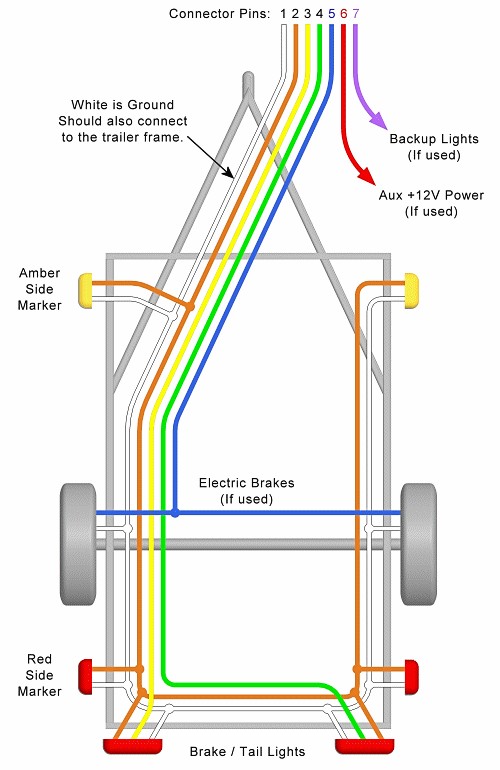
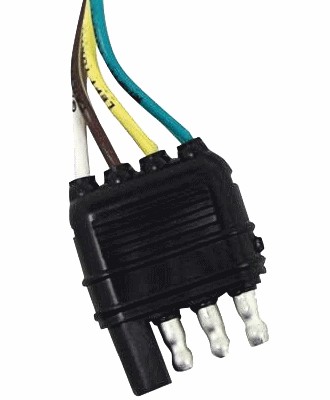
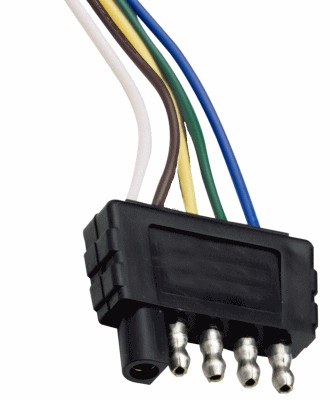
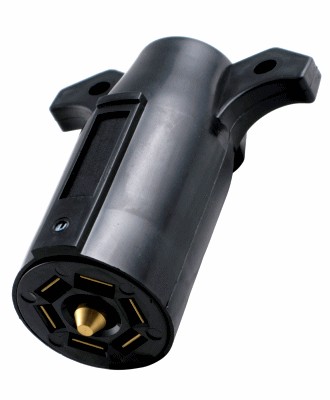
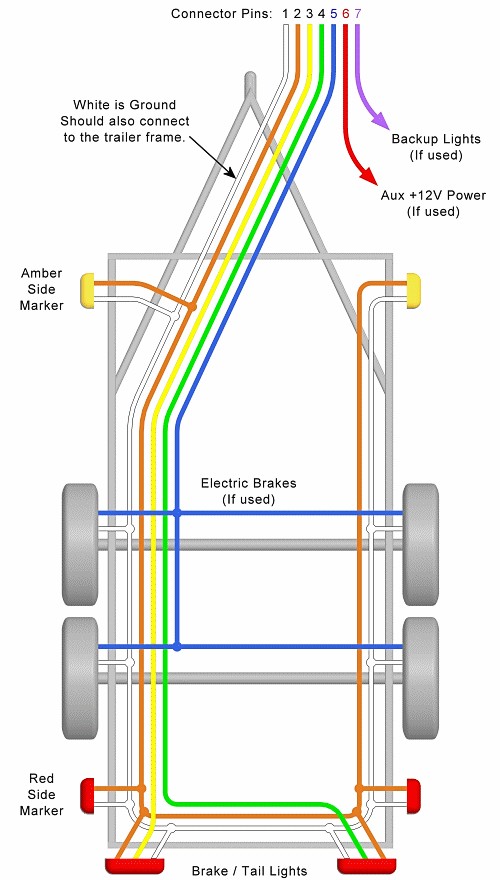
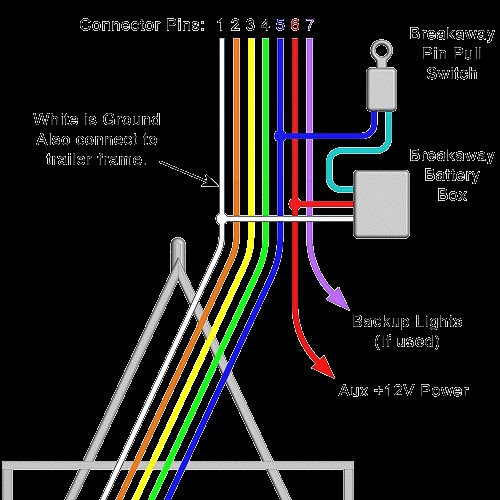
Practical Wiring Considerations: Wire Gauge, Routing, and Protection
Wire Gauge Selection
Choosing the correct wire gauge is critical for safe and efficient operation. Factors influencing wire gauge include voltage (typically 12V DC in trailers), current (measured in Amps), and wire length. Consult a wire gauge chart to determine the appropriate size based on the total current draw of your connected devices and the length of the wire run.
Wire Routing and Protection
Route wires along the trailer frame, providing protection with conduit or other coverings to prevent damage from abrasion or weather. Secure wires properly to avoid snags. Consider future expansion when planning your wiring layout, leaving access points for potential additions.
Breakaway System Wiring
Trailers over 3000 lbs GVWR often require a breakaway system to activate brakes if the trailer disconnects. This system typically connects to the auxiliary power (red wire), brake (blue wire), and ground (white wire).
Conclusion: Ensuring Safe and Reliable Towing
This comprehensive guide provides the essential knowledge and resources to understand and utilize a trailer wire diagram effectively. By following these guidelines and adhering to safety standards, you can confidently wire your trailer, ensuring safe and reliable towing for years to come. Remember to consult your trailer and vehicle owner’s manuals for specific requirements and recommendations. Always prioritize safety and accuracy when working with electrical systems.
